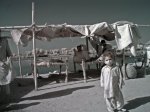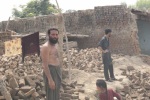By Sarwar Mushtaq
The revival of Documentary is an odd notion. Frankly, non fiction films have been popular from the inception of film making, and this spans across gender, age, generations, social and economic strata. After sitcoms and soaps, most TV sets in homes are tuned to NatGeo or Discovery, so much so that both channels are now available in Hindi. The genre enjoys immense popularity, but the marketplace (broadcast channels, ad agencies and corporations) are either slow or unable to recognize this, and the advertizing dollars are channeled exclusively to mindless entertainment programming. The change that we hope to see, and are seeing already now is movement in the film community itself, where film makers are coming forward and producing interesting, engaging and sometimes mind-blowing pieces. Having moved away from descriptives and information based films, to real stories with real characters has made the whole process of nonfiction films a joy. The best stories (even for fiction) come from real life anyway and the satisfaction of a final piece that people can connect with and relate to, have made it a completely different and rewarding experience. I hope and expect to see the numbers of non fiction film makers grow quickly, young as well as old, new as well as experienced. My bigger hope is that the marketplace will wake up and smell the coffee. The eyeballs and viewership already exist.
Internationally, non fiction has already made its place in the mainstream marketplace, and is slowly occupying greater space. In Pakistan, we are catching up, getting both inspiration and encouragement from the global film landscape. Of course it helps that we are also finally moving away from the classic image of the Pakistani documentary as the visual of a man and his ox ploughing the field while a flute from PIA inflight music plays in the background.
 The Filmmaking for Social Change (FFSC) project is designed to do exactly that. Create an ever growing number of independent film makers who get exposure not only to the process and magic of non fiction filmmaking but also how the genre can be used to reshape points view, behaviour, opinions, and sometimes lives of other individuals and entire communities. The experience of being on an international platform through LIDF, mingling with recognized directors and producers, and engaging an international and culturally diverse audience, all make a great contribution.
The Filmmaking for Social Change (FFSC) project is designed to do exactly that. Create an ever growing number of independent film makers who get exposure not only to the process and magic of non fiction filmmaking but also how the genre can be used to reshape points view, behaviour, opinions, and sometimes lives of other individuals and entire communities. The experience of being on an international platform through LIDF, mingling with recognized directors and producers, and engaging an international and culturally diverse audience, all make a great contribution.
The whole exercise is also meant to be the starting point of a domino effect, where the 30 film makers who went through the program will inspire 300 more, and we will be able to conduct more such workshops more frequently to reach a greater number of aspiring filmmakers. The other aspect is that many of the youngsters watching these films and hearing the stories of the filmmakers (on TV or at screenings) are inspired to follow in their footsteps.
Sarwar Mushtaq is the founder and CEO of Eckova Productions producing documentary works focused on the human condition, especially poverty, children, and women against a South Asian backdrop. He has worked in a producer director capacity on films about the earthquake, first time voters, disappearing coastal communities, educating the girl child, afghan refugees, rites of muharram, madrassas, and others. Eckova implemented the project Filmmaking for Social Change 2010.







